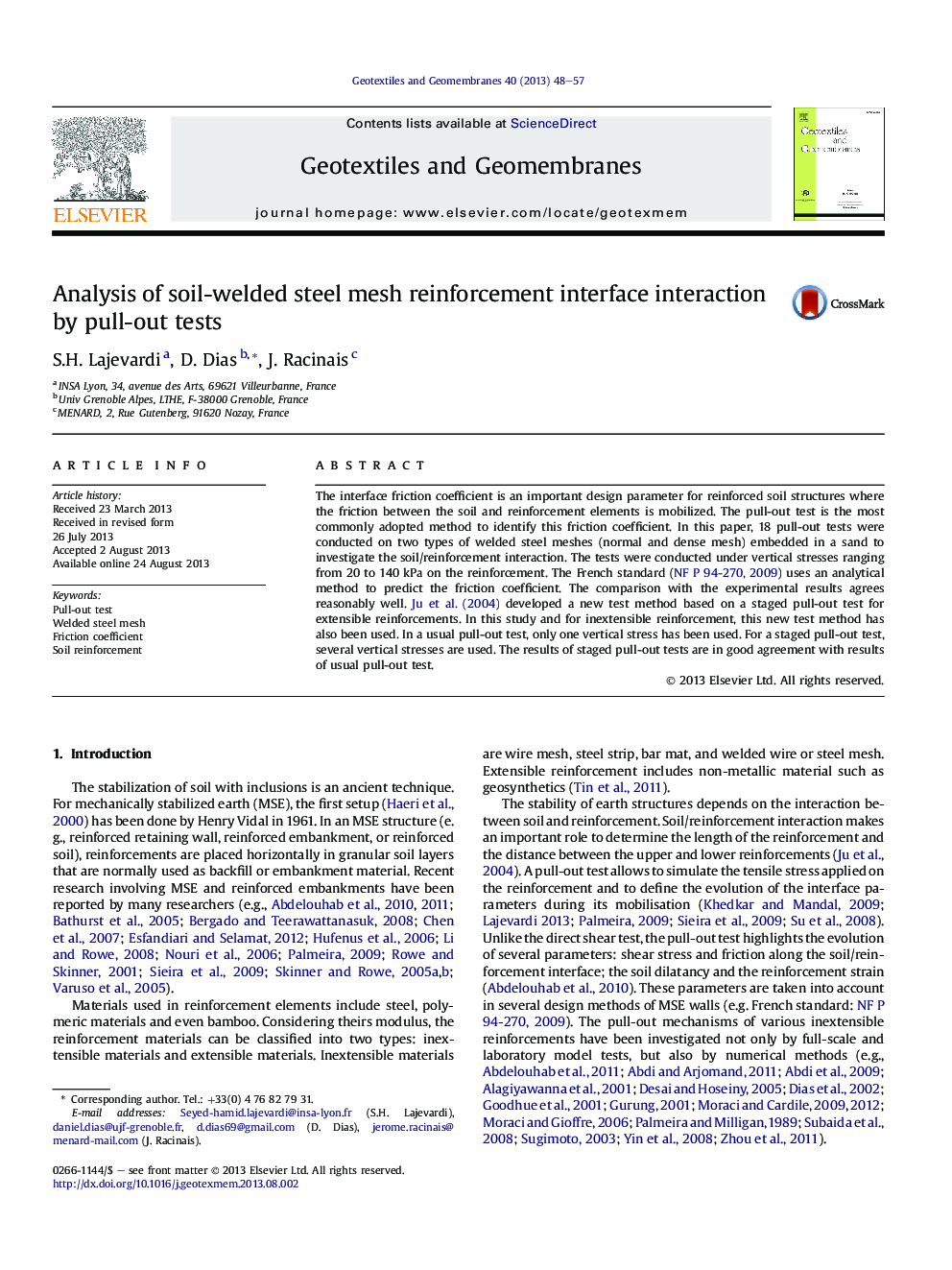| Article ID | Journal | Published Year | Pages | File Type |
|---|---|---|---|---|
| 274146 | Geotextiles and Geomembranes | 2013 | 10 Pages |
The interface friction coefficient is an important design parameter for reinforced soil structures where the friction between the soil and reinforcement elements is mobilized. The pull-out test is the most commonly adopted method to identify this friction coefficient. In this paper, 18 pull-out tests were conducted on two types of welded steel meshes (normal and dense mesh) embedded in a sand to investigate the soil/reinforcement interaction. The tests were conducted under vertical stresses ranging from 20 to 140 kPa on the reinforcement. The French standard (NF P 94-270, 2009) uses an analytical method to predict the friction coefficient. The comparison with the experimental results agrees reasonably well. Ju et al. (2004) developed a new test method based on a staged pull-out test for extensible reinforcements. In this study and for inextensible reinforcement, this new test method has also been used. In a usual pull-out test, only one vertical stress has been used. For a staged pull-out test, several vertical stresses are used. The results of staged pull-out tests are in good agreement with results of usual pull-out test.
